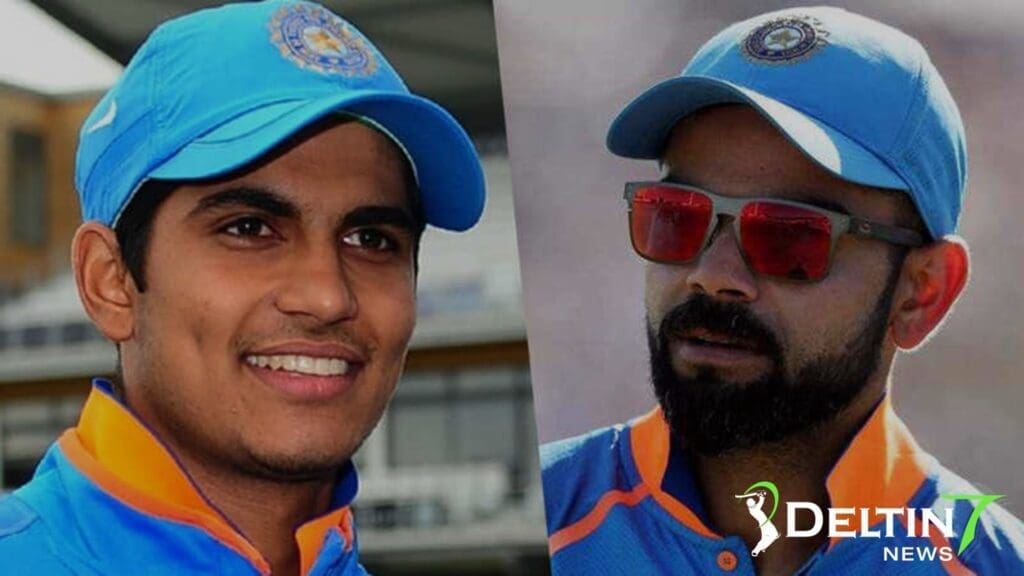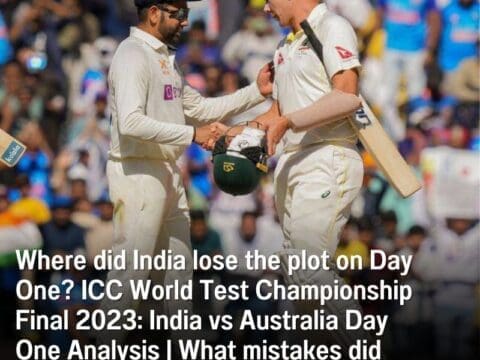Shubman Gill Next Virat Kohli, Drawing Comparison Between Two Indian Cricketer – Shubman Gill, a young batter in the Indian cricket team, has been making waves with his impressive performance on the field. The future of the Indian cricket team may well rest on his shoulders, with some even calling him the next Virat Kohli. But what sets Gill apart from other players and makes him a standout performer in this ultra-quick sport?
Cricket is a sport of milliseconds, where the ball travels at an average speed of 32 meters per second. Elite batters must have quick reactions, with some even having a reaction time of 120 milliseconds to a visual stimulus. However, what makes Gill special is his trigger movement, or the way he positions himself before the ball is released.
Unlike many modern batters who move forward to cut down the movement of the ball, Gill stays inside the crease with his back foot across and front foot slightly open. This gives him that extra millisecond to play his shots with a smooth flow and no frantic movements.
Gill’s trigger movement is not set in stone and can adapt to different bowlers. For example, against New Zealand, his trigger movement was parallel and across, but against fast bowler Lockie Ferguson, he moved back and across. This allows Gill to transfer his weight back or forward as needed, making his shots look effortless.
Shubman Gill Next Virat Kohli, Drawing Comparison Between Two Indian Cricketer – The Future of Indian Cricket
His technique, honed from a young age and repeated millions of times, may look aesthetically pleasing, but it is all about scoring runs for Gill.
Standing tall at 6ft 2in, the right-handed opener has been drawing comparisons with the Indian cricketing legend and current skipper, Virat Kohli. The reason for this is not just his batting style, but also his determination, focus and calm demeanor on the field.
Gill, like Kohli, has a unique batting technique that sets him apart from others. He has an extra millisecond to play his shots compared to other players, thanks to his trigger movement. He stays inside the crease, with his back foot across and the front foot slightly open. This allows him to transfer his weight back or forward with ease, giving him that extra time to play his shots.
His flow of the bat is smooth from his high back lift and there is no bat tap, making his shots look effortless and pleasing to the eye. Shubman Gill’s technique was put to the test in his debut Test series in Australia, where he faced the likes of Pat Cummins, Mitchell Starc and Josh Hazlewood.
Despite being beaten three times in his first over of Test cricket, Gill showed his resilience and went on to score 45 runs, which was crucial in the low-scoring Test. His 91 in the Gabba chase, often goes unnoticed, but it was a testament to his character and fighting spirit.
While Gill and Kohli have different batting techniques, they share a number of similarities, the most important of which is their determination and focus on the field.

Shubman Gill Next Virat Kohli, Drawing Comparison Between Two Indian Cricketer – The Future of Indian Cricket
Both players are calm and composed, and never let the pressure get to them. This has helped them to consistently perform at the highest level and make a name for themselves in the cricketing world.
With his exceptional talent, Gill has also been touted as a future captain of the Indian cricket team. Many cricket experts believe that Gill has the leadership qualities and the right temperament to lead the team in the future. He has a good understanding of the game and the ability to lead by example, which are crucial traits for any captain.
In conclusion, Shubman Gill is indeed a special talent and has the potential to become Playing cricket in India comes with the downside of hyper-scrutiny, but Gill has proved himself to be up to the task.
He has the potential to be India’s next captain, with his talent and ability to adapt to different situations. Whether it’s his trigger movement or his natural ability, Shubman Gill is a player to watch in the future of Indian cricket.














